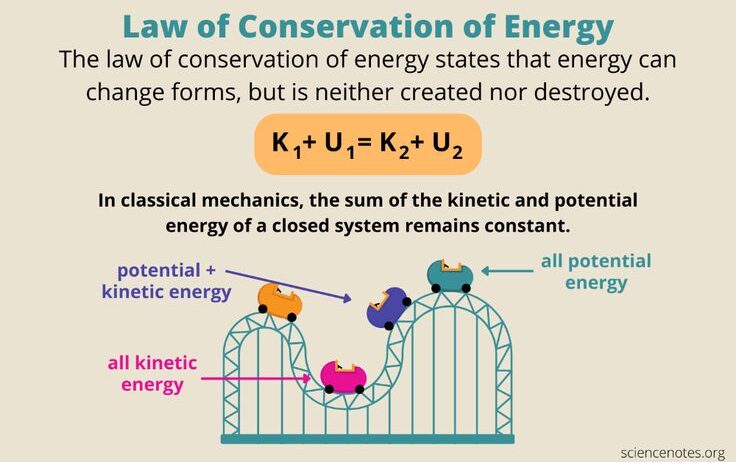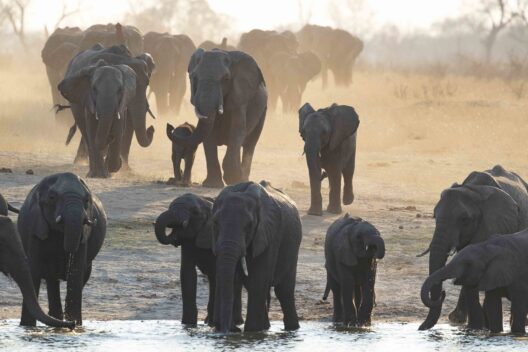In the realm of physics, the concept of kinetic energy swirls like a vibrant dance, encapsulating the energy possessed by an object in motion. To comprehend conservation of kinetic energy is to unravel the intricate tapestry that links dynamic systems. It elucidates how energy is neither created nor destroyed, but rather transformed and transferred as objects collide, glide, and navigate through their environments.
The law of conservation of kinetic energy stipulates that within a closed system, the total kinetic energy remains constant, provided that no external forces act upon it. Imagine a gleaming billiard ball, propelled across a felt-covered table. As it strikes another ball, the kinetic energy is not obliterated; it is transferred, causing the second ball to move while the first slows. This is the rhythmic exchange of energy—an eternal waltz that underpins not only sports but the very fabric of our universe.
To traverse the landscapes of kinetic energy, one must first grasp its definition. Kinetic energy ( (KE) ) can be quantified by the formula ( KE = frac{1}{2}mv^2 ), where ( m ) signifies mass and ( v ) denotes velocity. This expression reveals that kinetic energy is not merely a linear concept; it escalates exponentially with velocity. Thus, a mere doubling of speed quadruples the kinetic energy. This phenomena highlights the crucial interplay between mass and velocity, where the former alone cannot dictate energy without considering the latter’s influence.
Furthermore, conservation of kinetic energy emerges vividly in elastic collisions, where two objects collide without any energy loss to the surrounding environment. Picture two ice skaters, poised on a shimmering rink, each gliding effortlessly, until they intertwine in a pirouetting embrace. They exchange their kinetic energies, each skater spinning off in exhilarating new directions, their energies transformed yet conserved within the closed system of their interaction. This perfect exchange elucidates a principle that underlies many dynamic systems, from molecular reactions to celestial mechanics.
In contrast, inelastic collisions showcase the limitations of kinetic energy conservation. Envision a pair of cars crashing at an intersection. Rather than a graceful ballet of energy transfer, they crumple and entwine, dissipating some of their kinetic energy as sound, heat, and structural deformation. The kinetic energy before impact is greater than the total kinetic energy following the collision. This demonstrates that while momentum may be conserved, kinetic energy can be irreversibly lost in a tumultuous symphony of destruction. Such scenarios underscore the importance of considering the type of collision when analyzing kinetic energy, as the consequences can have profound implications in engineering, safety, and resource sustainability.
Understanding conservation of kinetic energy extends beyond theoretical musings; it has practical applications that resonate throughout our daily lives. For instance, in the conception of energy-efficient automobiles, knowing how to optimize kinetic energy through design and materials can lead to innovations that not only conserve fuel but minimize emissions, embodying a commitment to environmental stewardship. Likewise, in the development of rail systems, engineers harness kinetic energy from friction and air resistance, channeling it into regenerative braking systems that convert and store energy as trains decelerate, further exemplifying how natural laws can align with sustainability efforts.
Moreover, every stride taken on solid ground echoes the principles of conservation of kinetic energy. As a person runs down a hill, gravitational potential energy transforms into kinetic energy. Yet, as they ascend, they must exert energy that momentarily exceeds what is available from gravitational forces, illustrating an ongoing exchange and utilization of energy resources. This interplay fosters a consciousness about our energy consumption and challenges us to consider the efficiency of our movements—whether on foot or in vehicles.
The realm of conservation of kinetic energy also offers a unique lens through which to analyze broader socio-economic patterns. In a world grappling with climate change, the conservation principles that govern kinetic energy can be paralleled with the need for a sustainable energy economy. As we consider the trajectory of technological advancements, the transition towards renewable energies becomes paramount. Just as energy in motion is conserved through efficient interactions, so too must societies conserve and repurpose energy in more sustainable ways to mitigate ecosystem degradation and reduce carbon footprints.
As we delve deeper into the winds of kinetic energy, one cannot overlook its role in the natural world. In the kinetic tapestry of ecology, animals perform countless energy transactions. A cheetah, in pursuit of prey, exhibits kinetic energy conservation in a burst of speed before ultimately surrendering that energy to capture its meal, thus sustaining its life cycle. In this symbiotic exchange, energy flows akin to a river, carving paths through both biological systems and ecological relationships.
Ultimately, the conservation of kinetic energy is not merely a scientific abstraction. It invites us to reflect on our behaviors, systems, and interactions within an ever-shifting environment. By harnessing an understanding of kinetic energy, we are better equipped to make informed choices, design systems that prioritize sustainability, and embrace an ethos of conservation that echoes through every facet of life—constantly moving, indefinitely transforming, endlessly vital.







